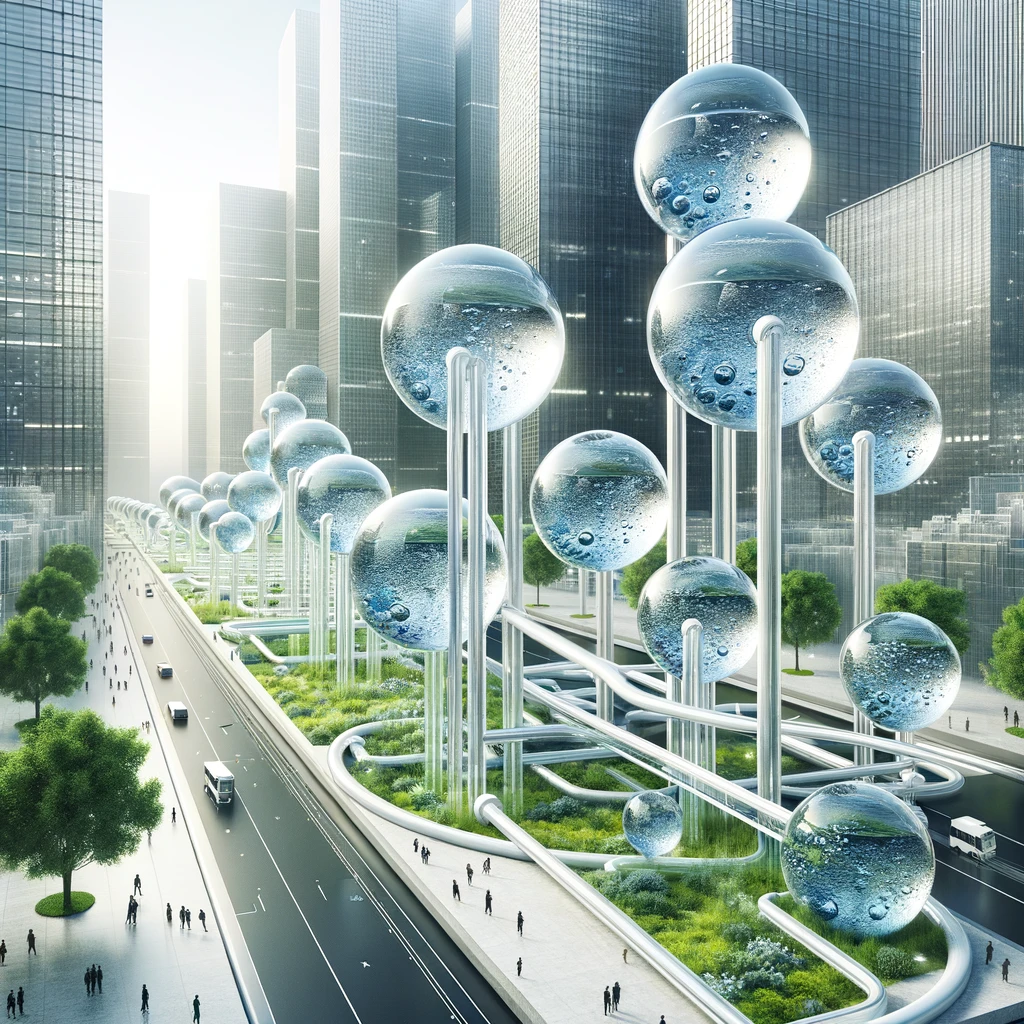Overview
The AquaSphere project imagines a future where urban water recycling is integrated into the architectural fabric of buildings and public spaces, creating a self-sustaining ecosystem within cities. This system collects, purifies, and redistributes water through a network of visible, aesthetically designed pipelines and containment spheres. These structures not only serve a functional purpose but also act as educational and interactive art installations, promoting water conservation awareness among the urban population.
Objectives
- Water Conservation: Dramatically reduce the urban water footprint by recycling greywater and rainwater for non-potable uses, such as irrigation, flushing, and cooling.
- Public Engagement: Use the visual and interactive aspects of the water recycling system to educate the public on the importance of water conservation and sustainable living practices.
- Aesthetic Integration: Design the water recycling infrastructure to be visually appealing, ensuring that it enhances the urban landscape rather than detracting from it.
- Innovation in Water Management: Showcase cutting-edge water purification technologies that can be implemented in urban settings, serving as a model for cities worldwide.
Implementation Phases
- Design and Innovation: Develop innovative water purification and recycling technologies that can be incorporated into urban infrastructure, focusing on efficiency, sustainability, and aesthetic value.
- Pilot Projects: Identify urban areas for pilot projects, integrating the AquaSphere system into buildings, parks, and public spaces to test its effectiveness and public reception.
- Public-Private Partnerships: Collaborate with government entities, environmental organizations, and private sector stakeholders to scale the project across urban areas, ensuring financial viability and community support.
- Expansion and Adaptation: Based on feedback and performance data from pilot projects, refine the technology and design for broader implementation, adapting to different urban environments and climatic conditions.
Expected Outcomes
- A significant reduction in the demand for potable water by reusing treated greywater and rainwater for various non-potable applications.
- Increased public awareness and engagement regarding water conservation efforts, leading to behavioral changes that further contribute to sustainability goals.
- Enhanced urban aesthetics through the integration of functional, educational, and visually striking water recycling infrastructures.
- Establishment of a new standard for water management in urban planning, inspiring cities globally to adopt similar sustainable practices.

